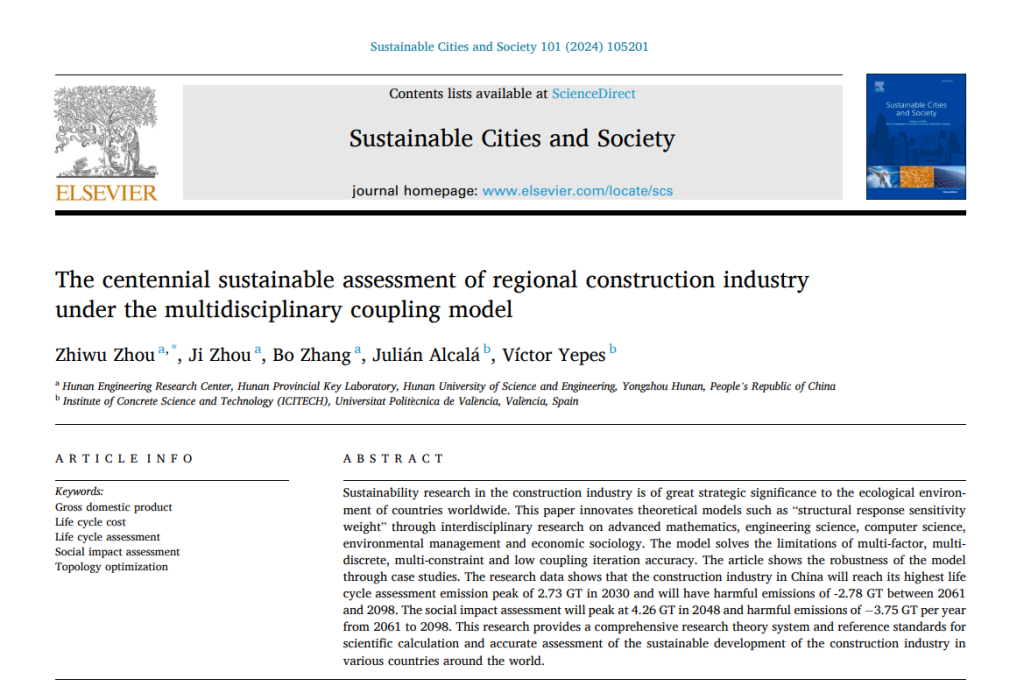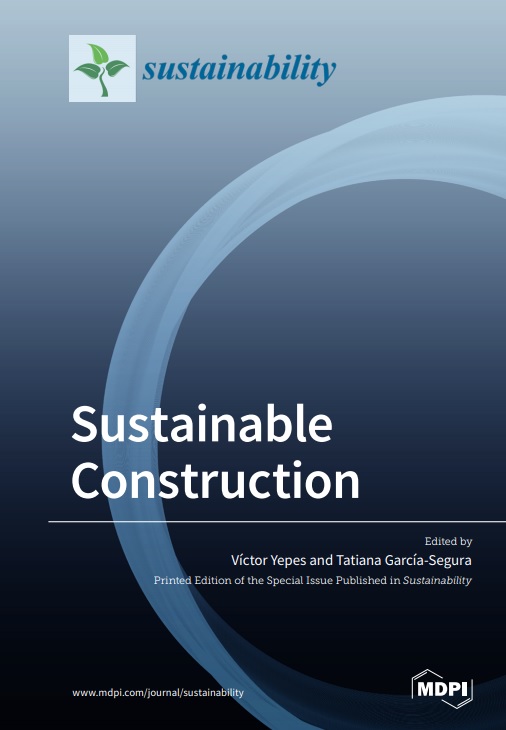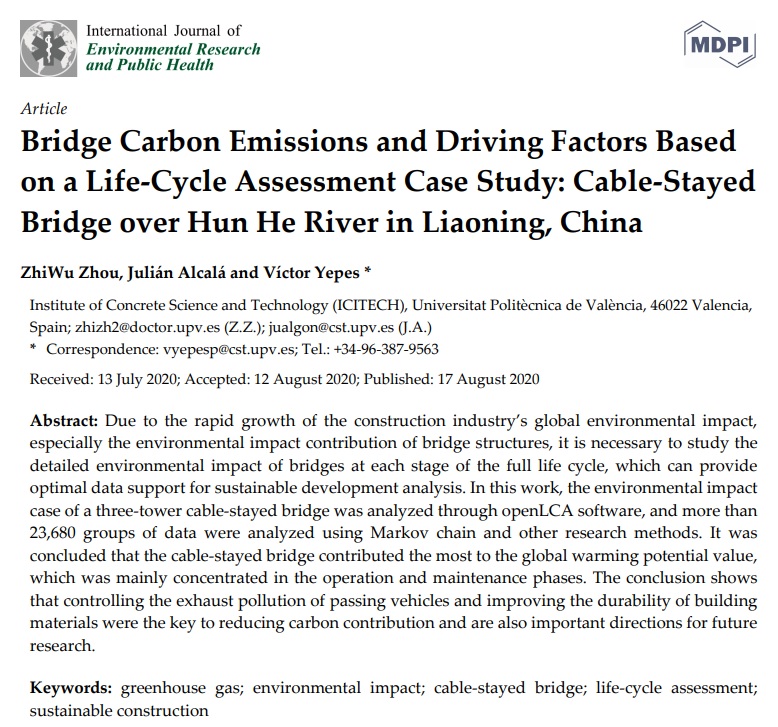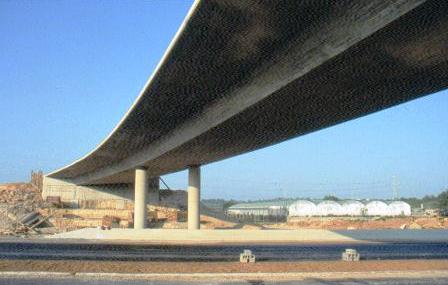 Un artículo reciente en Sustainable Cities and Society revista del primer decil del JCR, explora un innovador modelo de evaluación de la sostenibilidad en la industria de la construcción, con aplicaciones de gran impacto a nivel global.
Un artículo reciente en Sustainable Cities and Society revista del primer decil del JCR, explora un innovador modelo de evaluación de la sostenibilidad en la industria de la construcción, con aplicaciones de gran impacto a nivel global.
Esta investigación, llevada a cabo por un equipo de expertos de la Universidad de Ciencia e Ingeniería de Hunan (China) y de la Universitat Politècnica de València (España), introduce el «modelo de acoplamiento multidisciplinar», una metodología que integra conocimientos avanzados de matemáticas, ingeniería, ciencias ambientales y sociología económica para analizar, de manera más precisa, los efectos de la construcción sobre la sostenibilidad a largo plazo. El trabajo se enmarca dentro del proyecto de investigación HYDELIFE que dirijo como investigador principal en la Universitat Politècnica de València.
Objetivos y contexto de la investigación
El trabajo parte de un desafío global urgente: reducir las emisiones de carbono en la industria de la construcción, que representa un porcentaje significativo del consumo energético y de las emisiones contaminantes a nivel mundial. Según estimaciones previas, esta industria generará más del 50 % de las emisiones de carbono para 2050 si no se implementan políticas de mitigación eficaces. En este contexto, el equipo de investigación plantea un enfoque innovador para analizar el ciclo de vida completo de las construcciones, desde la selección de materiales y el diseño, hasta la construcción, el mantenimiento y el desmantelamiento, conocido como evaluación del ciclo de vida (LCA, por sus siglas en inglés).
Además, para obtener una visión integrada que abarque el impacto ambiental, social y económico de cada proyecto, se emplea la evaluación social del ciclo de vida (SIA), que permite analizar los efectos en la sociedad y en la economía. El objetivo principal de la investigación es ofrecer un marco más robusto que ayude a los gobiernos y a las empresas del sector a tomar decisiones informadas que favorezcan el desarrollo urbano sostenible.
Metodología y desarrollo del modelo
Para desarrollar este modelo, los investigadores implementaron una técnica de «acoplamiento multidisciplinar» novedosa que incorpora algoritmos avanzados y teorías de optimización de estructuras en tres dimensiones. Este enfoque se basa en el uso de algoritmos de interpolación y ajuste de datos, capaces de proyectar los impactos de la construcción de manera más precisa. Además, el modelo emplea herramientas de software de análisis ambiental, como OpenLCA, que permite integrar datos económicos y medioambientales para evaluar la sostenibilidad.
El equipo realizó pruebas del modelo en cuatro regiones económicas clave de China: las provincias de Hubei, Jiangsu, Henan y Guangdong, seleccionando puentes de gran escala en cada una como ejemplos de estudio. A través de análisis finitos y optimización de topología de estas estructuras, lograron proyectar cómo variará el impacto ambiental y social a lo largo de los próximos cien años.
Resultados más destacados y proyecciones futuras
Los resultados obtenidos indican que la industria de la construcción en China alcanzará su máximo de emisiones en el año 2030, con un estimado de 2,73 giga toneladas (GT) de CO₂. Tras este pico, se proyecta una significativa reducción de las emisiones, con niveles de -2,78 GT anuales entre 2061 y 2098, debido a la implementación de técnicas de construcción más eficientes y al uso de materiales más sostenibles. A nivel social, la evaluación SIA prevé un pico de impacto en 2048, con 4,26 GT de CO₂ equivalente en afectaciones sociales, seguido también de una reducción en las décadas posteriores.
Para obtener estas cifras, el estudio utilizó un algoritmo de optimización de la estructura en las distintas fases del ciclo de vida, con el que identificó puntos de mejora y áreas críticas de impacto. Así, el modelo no solo ofrece una herramienta para la proyección de emisiones, sino que también permite evaluar el desempeño de cada estructura en términos de durabilidad, coste y adaptabilidad a cambios estructurales, lo cual podría ser crucial en regiones urbanas que experimentan un crecimiento acelerado.
Conclusiones y aplicación global
Este trabajo es una contribución pionera en la investigación sobre sostenibilidad en construcción, ya que ofrece un marco metodológico con potencial para ser replicado en otros países y sectores de la construcción. Su aplicación no solo está dirigida a la reducción de emisiones, sino también a la mejora de la resiliencia estructural y a la reducción de costes a largo plazo mediante un diseño optimizado. Los investigadores destacan que este modelo podría adaptarse a otros países que, como China, se enfrentan a grandes desafíos en la gestión de la sostenibilidad urbana y que buscan avanzar hacia economías bajas en carbono.
En conclusión, el modelo de acoplamiento multidisciplinar de esta investigación establece un estándar robusto para el análisis de sostenibilidad en construcciones complejas. Con este enfoque, gobiernos y empresas de construcción podrían optimizar sus prácticas para reducir los impactos negativos, no solo ambientales, sino también sociales y económicos, en sintonía con las metas de desarrollo sostenible. Este estudio ofrece, además, una guía para que la industria de la construcción pueda abordar sus desafíos actuales y proyectar una trayectoria sostenible para las próximas décadas.
Referencia:
ZHOU, Z.; ZHOU, J.; ZHANG, B.; ALCALÁ, J.; YEPES, V. (2024). The centennial sustainable assessment of regional construction industry under the multidisciplinary coupling model. Sustainable Cities and Society, 101:105201. DOI:10.1016/j.scs.2024.105201










